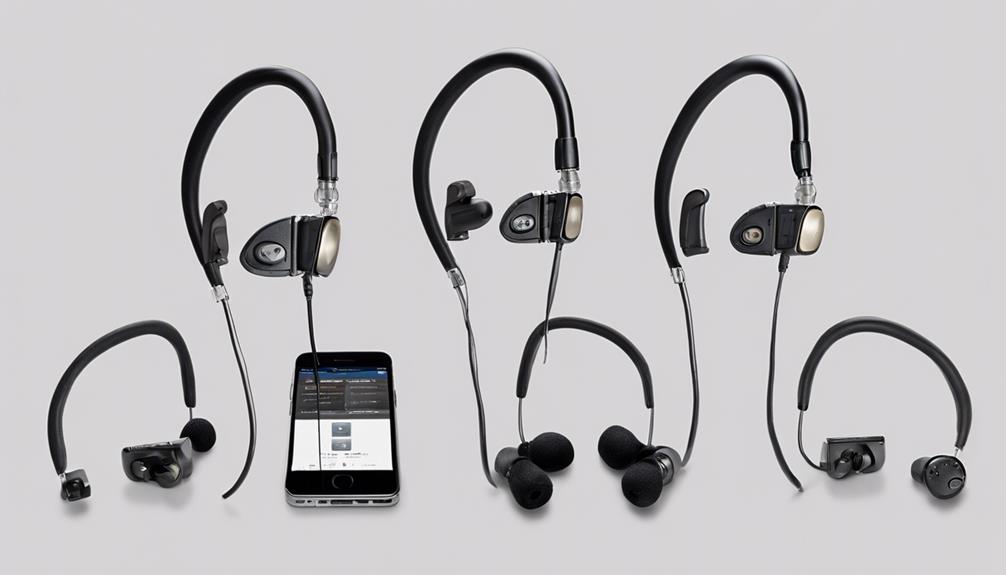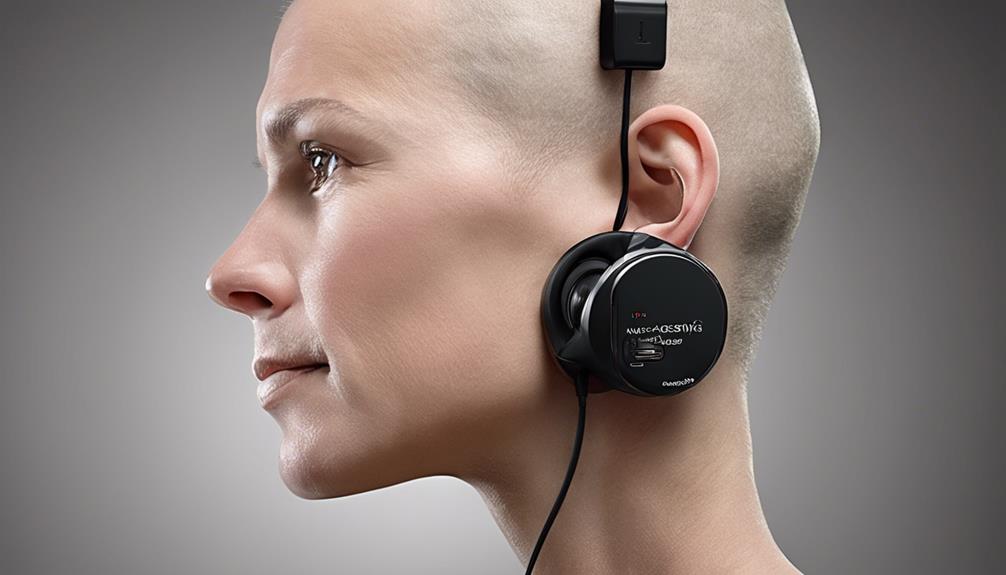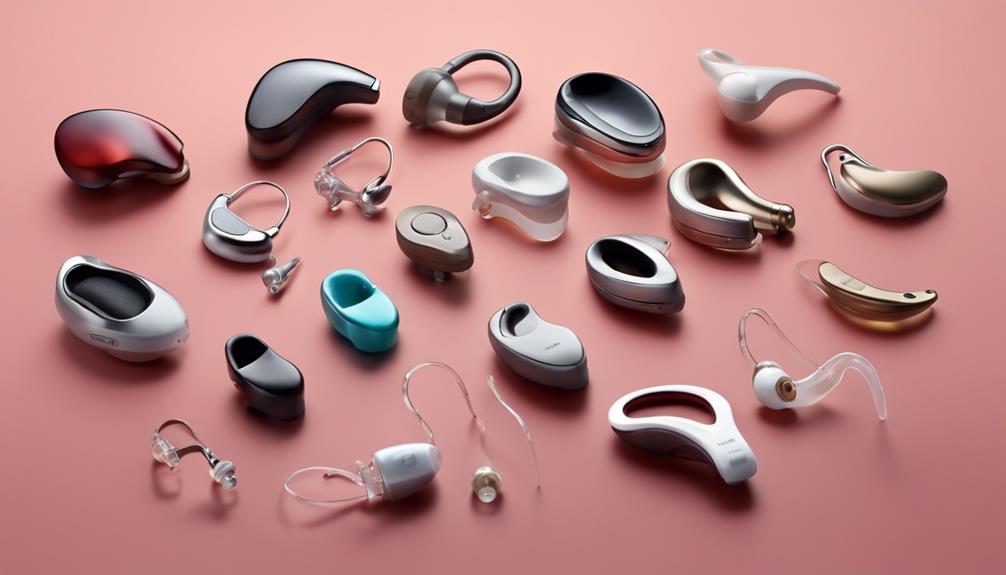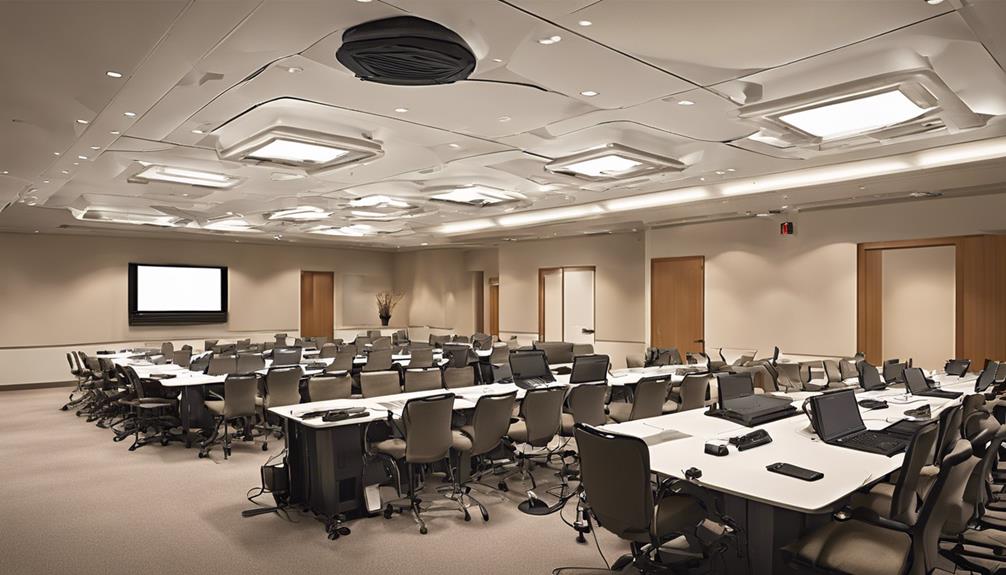When considering the convenience of accessing theaters, it is worth contemplating the effectiveness of devices created to aid in listening. However, the top three options are quite impressive.
Infrared Listening Systems, FM Assistive Devices, and Induction Loop Technology offer unique benefits for individuals with hearing impairments. These devices are crucial for enhancing the theater experience for those needing auditory support.
Let's explore how each of these tools revolutionizes the way individuals interact with sound in theaters.
Key Takeaways
- Infrared Listening Systems convert audio to light for transmission.
- FM Assistive Devices enhance sound quality and reduce background noise.
- Induction Loop Technology transmits sound directly to hearing aids.
- Assistive Listening Devices improve theater experiences for individuals with hearing impairments.
Infrared Listening Systems
In theaters, infrared listening systems utilize light-based technology to transmit audio signals, offering a wireless solution for individuals with hearing loss. These assistive listening devices work by converting audio signals into light signals, which are then transmitted via infrared waves to receivers worn by the users. The key advantage of infrared systems is their ability to provide clear audio without the need for physical connections or cables.
However, it's crucial to note that infrared systems have limitations. They require a clear line of sight between the transmitter and receiver to ensure effective signal transmission. This can be challenging in larger spaces or if there are obstacles blocking the signal path. Additionally, infrared systems are susceptible to interference from other light sources, which can impact the quality of the audio received.
Despite these limitations, infrared listening systems are commonly used in theaters, conference rooms, and other enclosed environments where they can provide a reliable and discreet solution for individuals with hearing loss.
FM Assistive Devices

Utilizing radio frequency technology, FM assistive devices play a crucial role in optimizing the theater experience. By wirelessly transmitting audio signals, these devices effectively enhance sound clarity and diminish background noise within theaters. This technology is particularly advantageous for individuals with hearing aids, as FM systems are widely compatible, ensuring accessibility for many theatergoers. Moreover, FM assistive devices offer the flexibility of customizable volume levels, catering to the specific hearing needs of users.
One of the key strengths of FM systems is their ability to support multiple users simultaneously. This feature not only fosters inclusivity but also enriches the communal aspect of attending theatrical performances. By providing clear and distinct audio directly to the users, FM assistive devices contribute significantly to a more immersive and enjoyable theater experience for all patrons.
Induction Loop Technology
Induction loop technology revolutionizes auditory experiences in theaters by seamlessly transmitting sound directly to telecoil-equipped hearing aids. This technology operates by creating magnetic fields that interact with telecoil-equipped hearing aids, enabling users to receive clear audio signals without the interference of background noise, making it particularly effective in venues with metal structures.
The seamless integration of induction loop systems offers users the freedom of movement within the looped area, providing a more inclusive theater experience. By directly transmitting audio signals to the hearing aids, induction loops eliminate the need for additional devices, enhancing convenience for individuals with hearing impairments in theaters.
This direct transmission ensures that users can enjoy performances without distractions, ultimately improving their overall enjoyment and engagement with the theatrical production. In conclusion, induction loop technology stands as a vital tool in enhancing accessibility and inclusivity in theaters for individuals with hearing disabilities.
Frequently Asked Questions
What Is the Most Commonly Used Assistive Listening Device?
The most commonly used assistive listening device is the induction loop system.
This system transmits sound electromagnetically along baseboards for direct reception by hearing aids. It's favored in theaters and conference centers for its ability to reduce background noise effectively.
Individuals with telecoil-equipped hearing aids benefit greatly from the induction loop system, which allows freedom of movement within the loop, enhancing the listening experience for those with hearing loss.
What Is an Assistive Listening Device for Theater?
Assistive listening devices for theaters are essential tools that improve sound clarity for individuals with hearing loss. These devices, such as personal amplification systems, FM systems, and infrared systems, transmit audio directly to users, reducing background noise and enhancing dialogue comprehension.
Mandated by the ADA, these devices ensure inclusivity and accessibility for all patrons. They play a crucial role in providing equal access to movie content, catering to individuals with varying degrees of hearing impairment.
What Two Assistive Devices Do Movie Theaters Offer the Deaf Community?
We've got the answer you're looking for.
Movie theaters offer closed captioning devices and assistive listening devices to the Deaf community.
Closed captioning devices display subtitles on personal screens, while assistive listening devices like neck loops or headphones enhance audio clarity.
These tools ensure a more inclusive movie-watching experience for the Deaf community, providing equal access to audio and visual content in theaters.
How Can I Hear Better at a Movie Theater?
To hear better at a movie theater, we can utilize various assistive devices. Adjusting hearing aid settings is crucial for managing loud volumes.
Researching theaters for accessibility options beforehand is beneficial. Some theaters offer hearing loop systems for direct sound transmission.
Closed captioning and audio description services are essential for those with severe hearing loss. Understanding and utilizing these resources can greatly enhance our movie theater experience.
Conclusion
In conclusion, assistive listening devices are like the missing puzzle piece that completes the theater experience for individuals with hearing impairments.
Just as a painter meticulously selects colors to bring a masterpiece to life, these devices carefully craft a vibrant and inclusive environment for all movie-goers.
With open captions, FM systems, and induction loops, the symphony of sound and visuals blend seamlessly, creating a harmonious and unforgettable cinematic experience for everyone.











